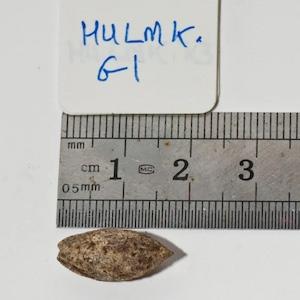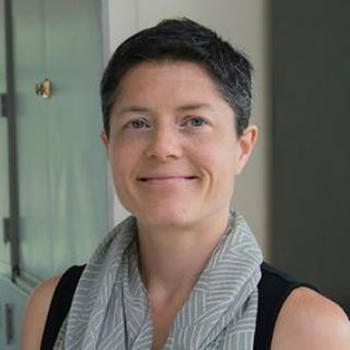George Mason University researcher Andrea Weeks played a key role in identifying an ancient seedling linked to the biblical myrrh. The seed, a yellow and fragrant resin from the Commiphora tree, was discovered in the Judean desert and revived by a team of researchers.

Weeks was invited to join the project, led by Hadassah University Medical Center in Jerusalem, because of her expertise in the evolutionary biology of Commiphora. Her extensive DNA sequence database played an instrumental role in analyzing the genetic makeup of the ancient specimen. Morgan Gostel, Weeks’ former PhD student and current research botanist at the Botanical Research Institute of Texas, also played a critical role in this research.
While the team confirmed the seedling’s genus, they have yet to pinpoint its precise species. “Its exact species remains unclear, highlighting the need for further biodiversity research. No lab has yet tested every species of Commiphora,” said Weeks, who is an associate professor in the Department of Biology in the College of Science and the director of George Mason’s Ted R. Bradley Herbarium.
One of the most puzzling aspects of the discovery is the seed’s location. Found in a Levantine cave, the seed had been preserved for centuries in an area far outside the modern range of Commiphora.

“Radiocarbon dating reveals that this seed formed long after biblical times, but that doesn’t explain how or why it ended up in a cave in the Judean desert 800 to 1,000 years ago,” said Weeks.
Funding from previous grants awarded to Weeks by the National Science Foundation (NSF) helped lay the groundwork for her involvement and impact in this discovery of the ancient seed, which the researchers selected to call “Sheba.” “The use of NSF-funded data in identifying Sheba shows how foundational research can have lasting, unexpected benefits,” she said.
The study’s findings could significantly influence future research on biodiversity by enhancing our understanding of historical flora and their evolution within current ecosystems.
The interdisciplinary nature of the research, combining archaeology, ethnobotany, chemistry, and plant taxonomy, contributed to the team’s success. Moving forward, Weeks and her lab plan to deepen their exploration of Commiphora diversity. “Like most scientific inquiries, this project leaves us with more questions than answers,” Weeks said. “It sheds light on the complexity of biodiversity and also serves as a reminder of life’s interconnectedness across time.”
Read more research stories
- November 18, 2025
- October 15, 2025
- October 9, 2025
- September 30, 2025
- September 25, 2025
This content appears in the Spring 2025 print edition of the Mason Spirit Magazine with the title "Ancient Seedling Linked to Biblical Myrrh."
